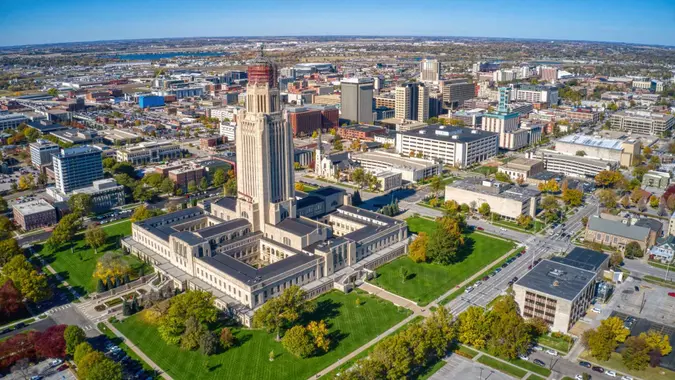I Was Retired, but Wasted Money on These 3 Things and Had To Go Back To Work

Commitment to Our Readers
GOBankingRates' editorial team is committed to bringing you unbiased reviews and information. We use data-driven methodologies to evaluate financial products and services - our reviews and ratings are not influenced by advertisers. You can read more about our editorial guidelines and our products and services review methodology.

20 Years
Helping You Live Richer

Reviewed
by Experts

Trusted by
Millions of Readers
We spend the majority of our lives saving for retirement. But our plans (and budget) don’t always go as expected.
Approximately 4.2 million Americans will turn 65 this year — the age associated with retirement — yet many of them will be working. About 19% of adults 65 and older are currently employed, with nearly 27% of those aged 65-74 still working as of 2023 — a figure projected to reach 30% by 2033, according to recent Bureau of Labor Statistics and Pew Research data. A recent ResumeBuilder.com survey also revealed that 13% of people who are retired plan to go back to work in 2025, thanks to high costs, inflation, insufficient savings and boredom.
And many retirees have regrets, too, about how they’ve spent their money. Here are three things retirees said they wasted money on and had to go back to work.
1. Supporting Adult Children
More and more baby boomers are supporting their millennial and Gen Z children well into adulthood, but it’s costing them their retirement.
Mark Lacy, a Seattle-based 65-year-old, has been financially supporting his two sons since they graduated from high school, resulting in a $400,000 loss in his retirement funds, he explained to Fortune. Both of his children are in their thirties, with expenses ranging from college tuition to plane tickets.
2. Maintaining a Larger Home
Gregory Boulware was a truck driver for 30 years before he retired in 2008 but went back to work in 2020 after he and his wife bought a house, NBC News reported.
“When we lived in an apartment, we were doing fine because we could easily afford it, but every year the rent would go up,” Boulware said.
The couple purchased their home with their life’s savings, which led them to fear losing the house. Every mortgage payment was a challenge, and they sometimes pulled from other expenses such as food and gas to make ends meet. As a result, Boulware enrolled in a job training program for low-income adults and was hired into a clerical job.
3. Not Having Enough Money Set Aside
Joyce Fleming, a 70-year-old nurse who retired in 2019, went back to work over budget concerns. The costs of groceries, housing, owning a car and insurance skyrocketed over the past several years, and many retirees never accounted for the dramatic cost of living increases.
After caring for her grandchildren during the pandemic, Fleming told WSJ that she took a job handling ticket sales and complaints at an amusement park call center. Now she’s looking for a higher-paying nursing job closer to home to help cover travel and home improvement costs.
The ‘Unretirement’ Trend
The phenomenon of returning to work after retirement, dubbed “unretirement,” is becoming increasingly common. Some of the top reasons cited by retirees for returning to work in 2025:
- Cost of living increasing more than expected (51%)
- Boredom and desire for social interaction (40%)
- Insufficient retirement savings (37%)
- Rising housing costs (39%)
- Need to pay off non-medical debt (34%)
Of those who plan to return to work, 79% intend to work part-time, while 13% plan to work full-time.
Retirement Readiness Challenges
The 2025 retirement landscape presents significant financial challenges:
- Over half (51%) of Baby Boomers aged 61-65 have investable household assets of less than $100,000
- In 2025, Americans believe they need $1.26 million to retire comfortably
- The full retirement age for Social Security has increased to 66 years and 10 months for those born in 1959, and 67 for those born in 1960 or later
Those entering their retirement years face other unique challenges as well — they’re the first to rely primarily on 401(k)s rather than traditional pensions, making them more dependent on their individual savings and market performance for security in retirement.
 Written by
Written by  Edited by
Edited by 

























